Emma Jameson – 15 October, 2015
The emphasis is not on the individual item of jewellery and how it was made, but rather the aesthetic, textural, and tactile effects that can be gleaned from the object's interrelationship with other items on display. The introductory videos provide visitors with insight into the working practices of Fran Allison, Renee Bevan, Sharon Fitness, Ross Malcolm, Roy Mason and Raewyn Walsh, but beyond that there is no further information about the exhibiting artists' working practices or ideologies.
Auckland
Works from Auckland Art Gallery Toi o Tamaki’s extensive collections
Wunderrūma: New Zealand Jewellery
Curated by Warwick Freeman and Karl Fritsch
18 July - 1 November 2015
“… Curiosity always takes for granted a kind of secondary revision of value, with the object being tied to something immaterial like a story or personal association, as well as asserting its own materiality in animal, vegetable or mineral terms”.(1) In Wunderrūma, the Auckland Art Gallery is transformed into a cabinet of curiosity, in which a myriad colours, textures and shapes in New Zealand jewellery are presented for our delight.
Wunderrūma can be seen as part of a general worldwide trend for museums to nostalgically hark back to the display practices of previous eras, and in the process replace conventional Beaux-Arts museum display mechanisms with ‘the Wunderkammer.(2) Established in the Renaissance and coming to fruition in the nineteenth century, the ‘Wunderkammer’, or cabinet of curiosities, presented collectors with an arena through which they could present the various beautiful artefacts that they had bought from exotic lands. Display cabinets and chests were filled with stuffed animals, globes, gemstones and other exotic items, which all pertained to the owner’s wealth, their intelligence and their taste. Inspiration of wonder and stimulation of creative thought was the ultimate goal, implicating both the owner and objects within a wider sphere of appreciation and satisfaction.
Wunderrūma certainly inspires such participatory responses. The Auckland Art Gallery has managed to transform its second floor into a space that is simultaneously playful and restful. The gold tones of the lighting, the wooden floors and the various works suffuse the gallery with a harmonious warm ambience, which is counterbalanced by the black wall at the end of the space. Perspex cabinets are arranged in dynamic zigzagging configurations, creating syncopated geometric rhythms across the gallery floor. While these may seem like incremental details, the interior design of the exhibition is fundamental in staging the viewer’s experience of the ‘cabinet’. It is a space that invites the optical participation of the visitor.
This sense of ocular dynamism is continued throughout the space. As opposed to chronologically structured, historically focussed museum spaces, the ‘cabinet of curiosities’ presents curators with an opportunity to generate a more authored form of display.(3) While the cabinets in the Renaissance purportedly classified and divided objects into categories such as ‘natural’ and ‘artificial’ in order to testify to the wonders produced by a divine governance of the world, this broad objective was, however, manipulated to equate with the specific interests and tastes of the individual collector.(4) Objects were not placed next to each other in accordance with a scientific regime of classification, but rather to maximise certain textural or optical effects that could create a sense of magnificence.
The cabinet involved a typological exuberance that prompted greater interaction and interpretation than could be achieved in a nominalised chronological structure.(5) Individual objects were special or noteworthy in themselves, but it was by virtue of their relationship with other objects that their full glory could be maximised. Bann exemplifies this when he states, “curiosity has the valuable role of signalling to us that the object on display is invariably a nexus of interrelated meanings…”(6)
Wunderrūma similarly evidences such authored classification and subsequent simulation of multi-layered interactions. Curators Karl Fritsch and Warwick Freeman term their categorisation process as ‘clumping’, where pieces of jewellery are grouped together according to their shape, material, or function.(7) Like previous owners of cabinets of curiosities, Fritsch and Freeman do not envisage their exhibition to be static. Rather, their clumping together of various materials is envisaged to enable the pieces to activate each other in a process of interaction and interchange of optical, tactile values. In the absence of a person wearing the pieces of encased jewellery, the gallery space in itself becomes a surrogate agent that breathes life into the objects.
The life-force in this exhibition is exhilarating. Although items on display within an institutional setting are technically inanimate, the arrangement of the jewellery pieces suggests an inner vitality that seems to radiate outwards. In Box A “Head, Bead”, the kowhai seeds, gold and muka of Alan Preston’s Seed Necklaces, Black, White, Red (2006) snake over each other in delicate strands of red, cream, and dark brown coils. Similarly, the necklaces in the top container of Box B “Head Bead” get thicker and chunkier as the viewer’s eyes move in a clockwise direction. The pieces start with the delicacy of Cath Dearsley’s silk threaded Toast, Hay, Spinach, Parsley, Celery, Apple, Mint, Thyme (2013) and end with the chunky, clay-like geometric shapes of Rohan Wealleans’ Paint Necklace (2012), linking together in a cyclical visual process suggesting evolution, organic development, and demonstrating sheer variety of design.
Jewellery is thus not simply an active ornament appropriated for adornment, but an active agent invested with character that inflicts and is inflicted by its wearer.
A favourite section of mine was Peter Madden’s Flies (Adjusted) (2005-ongoing) in Box M “Swarm”. In this work, actual flies have been encased within gesso, paint, 24ct gold leaf, silver leaf, copper leaf, resin and varnish. Although their containment within a Perspex box initially seems to repudiate their ability to ‘swarm’, Madden has skilfully manipulated composition and tone to allow animation to triumph over the inanimate. Small groups of the flies seem to face each other, apparently in some mode of communication. Two pairs seem to interlocked in a mating ritual. A line of 6 gold and silver insects seem to be following each other. The bright colours and the light glinting off the gold, silver and copper leaf emphasise this sense of movement. These are not merely static objects, but rather are rather vehicles through which we can imagine multisensory sensations: the flies’ sound, movement, and sense of touch. In turn, we are transported into the Perspex cabinet, in which we can imagine a miniature society reflective of ourselves. This is made explicit in the patterning of some flies in rainbow, Southern Cross, and grey/black patterns, which suggest projections into our own societal realm.
Fritsch and Freeman speak of their relationship to jewellery in terms of inside/outside (in terms of international/local). In this exhibition they seem to have put this concept into fruition through their selection and arrangement. In previous centuries the cabinet of curiosities was exciting because of its invitation for the imagination to traverse the ocean to unknown and exotic lands, but in this exhibition the exhilarating land where our imagination roams is the ‘outside’ of the gallery space, and the memories and senses associated with it.
Empowered with such vitality, the jewellery pieces on display emphasise formal and connotative qualities in a selection of items from the Auckland Art Gallery’s collection. These paintings, photographs and sculptures hang on the walls surrounding the Perspex containers, arranged in a traditional ‘Salon’ style. The two display styles converge, enriching the traditional ‘cabinet of curiosities’ presentation with horizontal and vertical cross-reference points where visual and textural features engage in a dynamic dialogue of reciprocal influence and suggestive import. In some rooms the additional works suggest an outside space in literal terms by explicitly demonstrating the function of the pieces. This is demonstrated in the ‘Earring’ section, in which Sam Stuart’s Te Puhi Kupe (1906) and Lawrence Alma Tadema’s Cleopatra (1877) feature sitters wearing earrings, providing a functional (and therefore physical, tactile) reference for the Kapeu, Kuru and Mako ear pendants.
In other rooms the links between the jewellery and collection pieces are more nuanced, bringing to light the formal and material qualities of each work. The “Shell” section is a wonderful example. The scallop shape of Moniek Schrijer’s Nuclear Chicken (2012) is echoed in the clam-like opening of the Macbook in Lisa Walker’s Pendant (2010), while the thick red cord on the Walker’s laptop transforms the object into a necklace, destined to be worn with pride by the modern consumer. This red cord overlaps the clear plastic of the fishing line of Schrijer’s work, fusing the two together in a formal and connotative relationship and extending the link to Lauren Lysaght’s When You Put a Shell to Your Ear IV (2003) where the gold shell shape in the middle of the laptop’s interior repeats the shell theme and the red of the interior the colour of Walker’s cord.
Finally, like the opening of the Macbook, the opening of Lysaght’s briefcase draws parallels with the opening of a shell to reveal the pearl inside and, like Walker, this act of revelation seems to be directed at modern consumption: “2053 at the Pacific. Hear La Oceania. Farewell Appearance”. The gold handcuffs too seem to suggest, like Walker’s red cord, a modern-day equivalent of the albatross hanging around the sailor’s neck. Traditionally associated with vanity at the time of the original cabinet of curiosities, the shell in these works seems to suggest the individual and collective sacrifice suffered in the face of this indulgence.
Both the “Swarm” section and the “Shell” are brilliantly curated, resulting in a myriad of imaginative possibilities resulting from the interplay of formal, material, functional, and connotative qualities. Again, the suggestion here is of the external natural world in which organic processes evolve as time passes. In this case, the ‘other’ of the cabinet of curiosities is an abstract concept rather than a specific location: memory of both known and unknown lands.
The selection of Randall Cottage Jewellery (1850-1910) evidences this. Small crossed keys, butterflies, hairpins, and rings that have been bent out of shape lie in a scattered arrangement, their rusted colour contrasting against the black background against which they are placed. Even without reading the date in the brochure, these pieces are evocative of another time. Their tarnished quality prompts an inner nostalgia for a world that is lost to us due to the passing of time yet these small trinkets seem deeply personal and intimate, allowing a certain sense of empathy to develop for the previous owner. They seem distant and proximate; abstract and definable.
Kate Newby’s Most Naturally (2013) presents a contemporary parallel, featuring a collection of small cast chains, leaves, rings, gemstones and coins. The type of objects are almost the same as the Randall Cottage Jewellery and the two collections thus work in dialogue with each other to suggest temporal continuity in both collection practices and human sentiment. The ghostly waters in James Valentine’s Diamond Lake (1885) exacerbate the quiet, still feeling precipitated in the viewing of these objects, which is emphasised by the photograph’s temporal similarity to the Randall Cottage Jewellery collection (the feeling that is generated seems to problematise the title “Swarm” for this part of the collection).
The implication here is that objects are found and acted upon within the environment. The deterioration of the Randall Cottage Jewellery is the result of inevitable chemical processes that emerge as time passes. Similarly, the gemstones in Newby’s piece exist because the earth produced them in geological processes.
The primacy of the earth and its processes is also alluded to in Gretchen Albrecht’s Pounamu II, which on a thematic level references the role of the natural world in creating jewellery materials and on a formal level references the oxidised metal of the Randall Cottage Jewellery in its soothing green colour. Rohan Wealleans’ Quiet Rocks (2004) enriches this understanding in arranging a series of topological drawings in a scientific chart of categorisation. Similar in approach to how Newby collects or sifts through her environment for personal archival purposes, Wealleans excavates the layers constituting the human environment for documentation purposes. The process is not educational, scientific, nor results driven, but is rather guided by personal, instinctive responses to the landscape and how aesthetic reactions are prompted within this.
This is a fundamental narrative, as it is through the natural environment that many of the artists in the exhibition have gained inspiration. Ross Malcolm and Roy Mason find not only their inspiration but also their materials in their immediate environment. Mason collects leaves from his Muriwai home and uses his artistic processes to investigate the visual dynamics caused by natural processes relating to weather and geography. Similarly, Fran Allison’s Possum Chain (2009) is an explicit harnessing of fauna for creative exploration. On a more metaphoric level, Renee Bevan visualises jewellery as connecting people to either places or people. The elements within Wunderrūma and their composition thus testify to a central thematic message: jewellery’s centralised position within the daily fabric of everyday life in both function and material, and the power that this in turn activates for it to engage in dialogues pertaining to a sense of history, place, and personalised memory.
Yet the construction of this beautiful, evocative narrative is achieved at a cost. As Bann states, “clearly this kind of parenthetic placing can do relatively little to bring out…strangeness and individuality…”(8) The wonder and allure resulting from a cabinet of curiosity depends in the large part on taking the objects out of history and in the process isolating them as beautiful ‘products’ that do not seem to have a history of production. This is perhaps the case in Wunderrūma. The emphasis is not on the individual item of jewellery and how it was made, but rather the (very beautiful) aesthetic, textural, and tactile effects that can be gleaned from the object’s interrelationship with other items on display. The introductory videos provide visitors with insight into the working practices of Fran Allison, Renee Bevan, Sharon Fitness, Ross Malcolm, Roy Mason and Raewyn Walsh, but beyond that there is no further information about the exhibiting artists’ working practices or ideologies.
This prioritising of the product rather than its production is made evident in the lack of text panels, or detailed notes in the exhibition guide. Visitors are simply presented with a list of numbers against which is stated the artist, the title of the object, and its media. With the sheer number of jewellery pieces on display, this guide becomes more like a ‘search and find’ quest, rather than an informative aid. The viewing process is brief, disrupted, and easily distracted by the plethora of other objects on display. Like previous cabinets of curiosities, the emphasis is not so much on enriching education, but rather on delighting and impressing the eye. While similarities are interwoven through various artistic media and their appearance, it would take a well-informed visitor to make connections between media, practice, and artist intention.
As a collective statement, Wunderrūma is impressive, but as an advocate for individual jewellery practices, it has some room for development. It is, however, an exhibition that I have visited at least four times now and I hope to visit again before it finishes. Every time I go, I find new favourite pieces, and new connections between the works. This cabinet has not satiated my curiosity yet.
Emma Jameson
(1) Stephen Bann, “The Return to Curiosity: Shifting Paradigms in Contemporary Museum Display”, p.125, in A McClellan (ed.), Art and its publics: Museum Studies at the Millenium. Blackwell, Oxford.
(2) Ibid., 118.
(3) Ibid., 123.
(4) Anthony Alan Shelton, “Object Realities”, Cultural Dynamics 7 (1): 5.
(5) Bann, “The Return to Curiosity”, 125.
(6) Ibid., 120.
(7) Quote from video on the Auckland Art Gallery website.
(8) Bann, “The Return to Curiosity”, 119

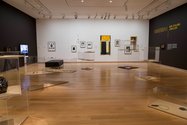
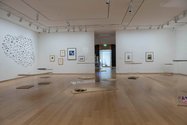
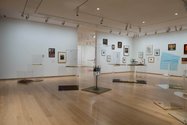
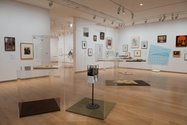
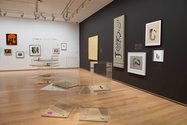
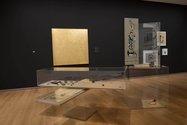
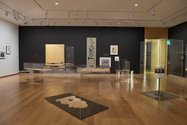

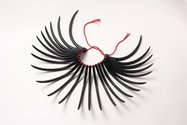




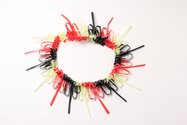

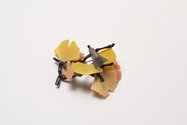
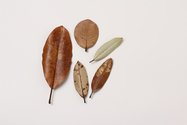
 Advertising in this column
Advertising in this column Two Rooms presents a program of residencies and projects
Two Rooms presents a program of residencies and projects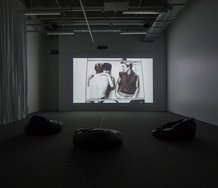


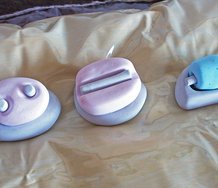
This Discussion has 0 comments.
Comment
Participate
Register to Participate.
Sign in
Sign in to an existing account.